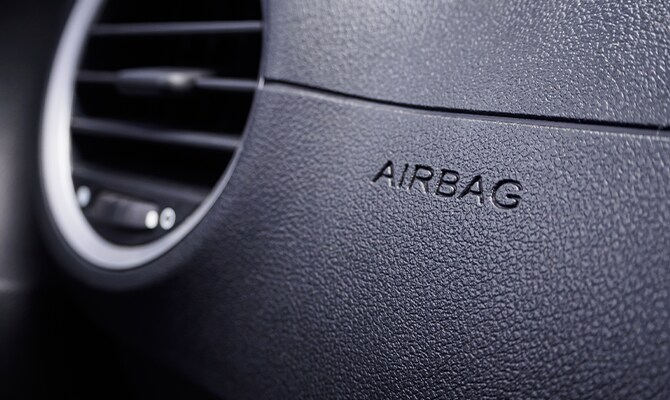Airbag and SRS Repairs
Airbag and SRS Repairs at Dayton Collision Center
There is an airbag computer that constantly monitors a number of related sensors within the vehicle. These sensors include accelerometers, impact sensors, side door pressure sensors, and seat occupancy sensors. When the requisite "threshold" has been reached or exceeded, the airbag control unit will trigger the ignition of a gas generator propellant to rapidly inflate a nylon fabric bag. As the vehicle occupant collides with and squeezes the bag, the gas escapes in a controlled manner through small vent holes. The airbag's volume and the size of the vents in the air bag are tailored to each vehicle type, to spread out the deceleration of (and thus force experienced by) the occupant over time and over the occupant's body, compared to a seat belt alone.
Over the years this basic system has become more complex. Triggering algorithms are used to reduce deployments when they are unnecessary. The signals from the various sensors are fed into the Airbag Control Unit, which determine the speed of the vehicle, the angle and severity of the impact, and the force of the crash along with other variables. Depending on the results of these calculations, the Airbag Control Unit may also deploy additional restraint devices, such as seatbelt pre-tensioners and pertinent airbags. These seatbelt pre-tensioners can actually tighten the seatbelt, driving all slack out of the seatbelt in a crash situation to tighten the harness of the occupant holding them into the seat. Today's vehicles can also come equipped with different types of airbags in multiple locations. For example, there are frontal airbags for both the driver and passenger, along with seat mounted side bags, and also "curtain" airbags which cover the side glass. Sometimes even a minor collision may set a hidden code within the airbag computer

Airbag Repair
We can reset your airbags if they deploy and get them back into shape so that they can deploy again should you ever need them once more. Our team of professionals knows how to reset your airbags and tend to the various systems that tell them what to do. That way, you can rest assured that they'll work properly and do their jobs again. If your airbags are damaged, we can fix or repair them.
SRS Repair
SRS stands for supplemental restraint system. If the SRS light turns on and stays on in your car, it means that your airbags need attention. It's important to heed this warning light because if there is an issue with your car's SRS, your airbags might not deploy. We can get to the bottom of the issue and make repairs to get everything working again.

Contact Us for an Appointment
Working airbags are a key part of enjoying a safer drive. Please give us a call if your car's airbags or SRS need attention. Our collision center is ready with professional technicians and specialized tools to get your car back into shape for your everyday adventures. Call today, or schedule online, for an appointment at our top-notch collision center!
-
Dayton Collision Center
2281 US Highway 130,
Dayton, NJ 08810
- Sales: 732-329-6111
Dayton, NJ 08810

